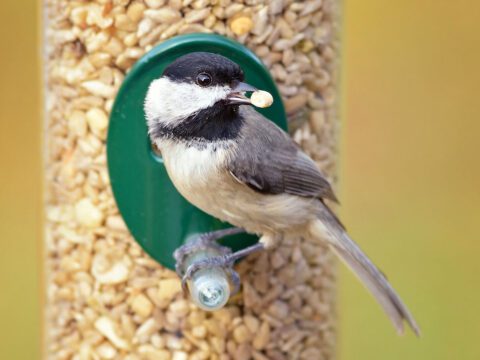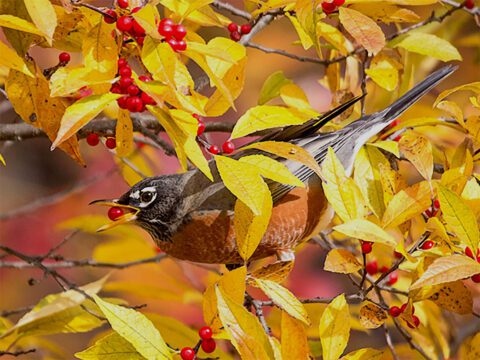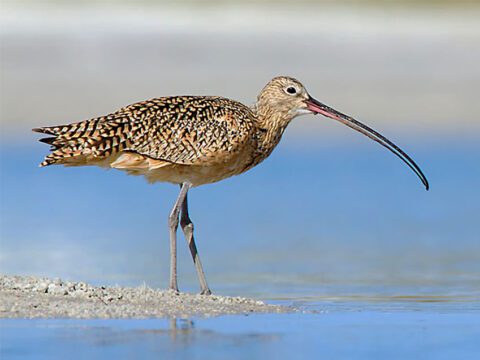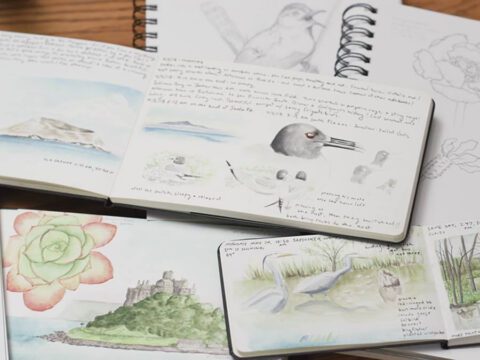Thursday at AOU: A New Kind of Conservation for Kirtland’s Warblers
By John W. Fitzpatrick, Cornell Lab director
August 14, 2009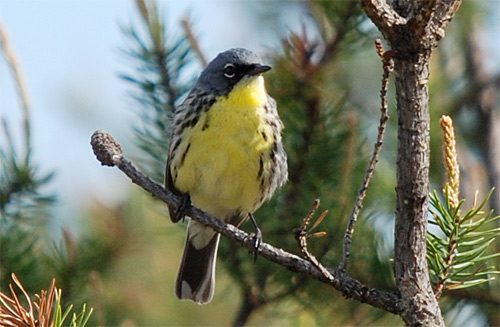
One of the most moving symposia on the meeting’s first day was an afternoon session on what biologist Mike Scott calls “conservation-reliant species.” The term applies to species that we can probably save from extinction, but not without perpetual conservation investments by humans.
The California Condor and a number of Hawaiian birds were discussed as examples, but the presentation that really caught my attention was on Kirtland’s Warbler, the bird with perhaps the smallest total breeding range of any bird in North America. Carol Bocetti, current chair of the Kirtland’s Warler Recovery Team, outlined the history and causes of this bird’s near-extinction (just 170 breeding pairs survived in the early 1970s).
The Kirtland’s Warbler’s extreme habitat specialization—on young, fire-maintained jack pine forests in Michigan—made things bad enough, but the spread of Brown-headed Cowbirds, which lay their eggs in other birds’ nests at the expense of their hosts, nearly doomed the species. Kirtland’s Warblers are alive today only because of massive and ongoing eradication of cowbirds, combined with annual clearing and replanting of thousands of acres of jack pine forest.
Amazingly, these desperate-sounding conservation actions, combined with constant research and monitoring, have been staggeringly successful! This year, researchers counted more than 1,800 pairs of Kirtland’s Warblers, and the species now breeds in 14 counties in Michigan’s Lower Peninsula and six counties of the Upper Peninsula, plus places in adjacent Ontario and Wisconsin. The species is getting more numerous every year, and has now well exceeded the original recovery target of 1,000 breeding pairs.
So, is it time to delist the species? Not so fast! Doing so would cut off the source of financial support for the very conservation actions that caused the turnabout. If cowbirds were to have free rein once again, and if land managers stopped clearing and replanting jack pine stands, the Kirtland’s Warbler would be doomed to repeat its earlier catastrophic collapse.
Bocetti proposed a novel answer: establish a Kirtland’s Warbler conservation partnership: a signed agreement involving federal, state, and local agencies, nonprofits, and even private timber companies. Because jack pines are valuable as pulp wood, annual clearing of pine stands in 50-year rotations could both earn money and save the species, as long as enough land is involved. Bocetti estimated a total of 190,000 acres under management would yield the 38,000 acres of usable habitat required to support 1,000 warbler pairs at any one time.
Key to this partnership would be creation of a permanent endowment that could yield the annual funds needed to control cowbirds and manage habitat. To this end, the National Fish and Wildlife Foundation recently named the Kirtland’s Warbler in its list of 10 “keystone species,” making it eligible for federal grants on a 10-year plan to create the endowment.
I was lucky enough to encounter Carol Bocetti in the food line at the Philadelphia Zoo, and we had dinner together. A vibrant and articulate optimist, Carol is jubilant about the emerging success of the Kirtland’s Warbler story. She believes that 10 years from now, the species could be permanently removed from the Endangered Species List despite its perpetual status as a “conservation reliant species.” I’ve never heard of such a plan before, and I love it.

All About Birds
is a free resource
Available for everyone,
funded by donors like you
American Kestrel by Blair Dudeck / Macaulay Library

